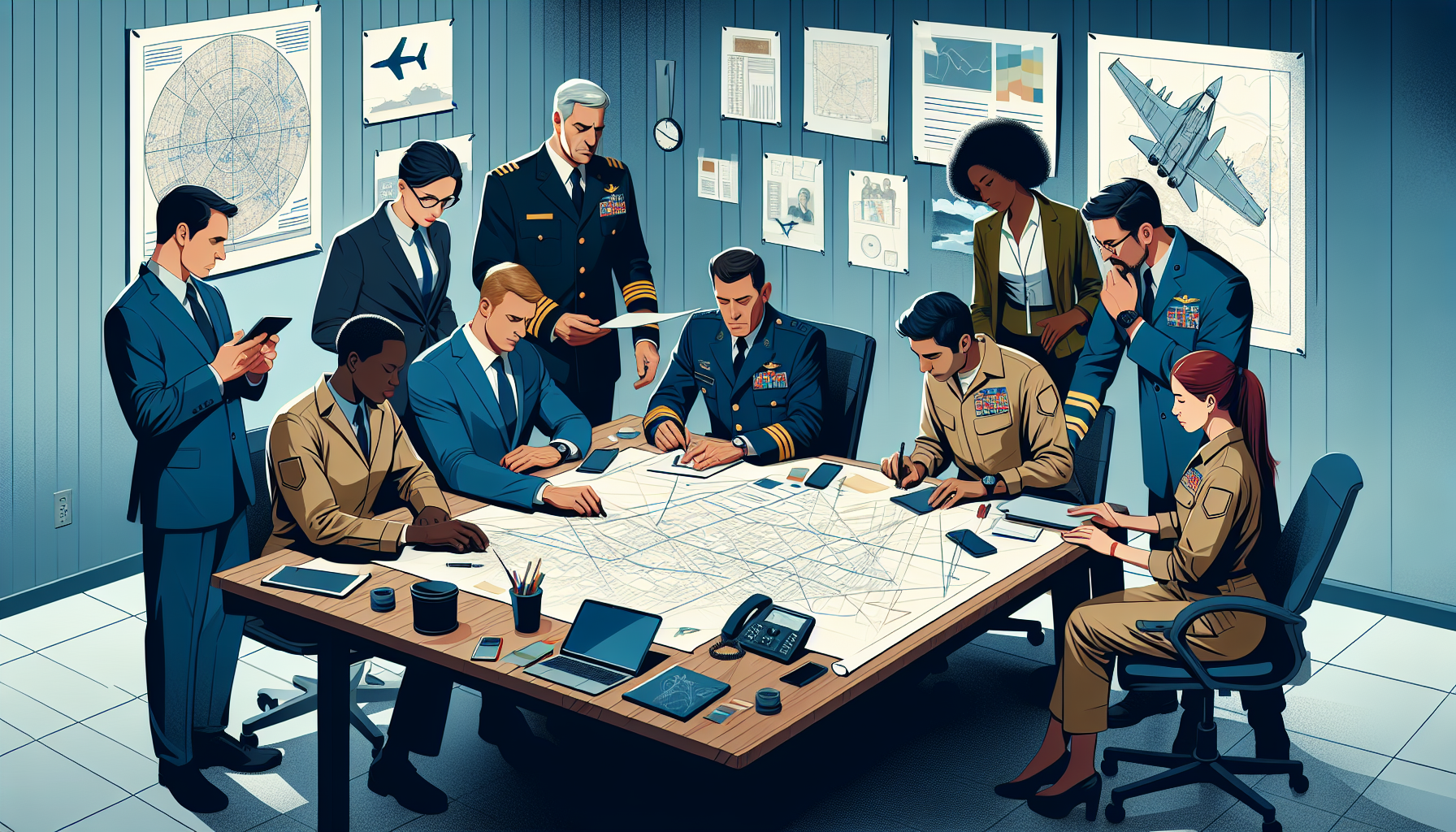Definition
The Concept of Operations (CONOPS) is a strategic document in military operations which outlines the proposed method of action to achieve mission objectives. It gives an overall picture of the operations, providing details like the arrangement of forces, tactics, timeline, and the sequence of events. Essentially, CONOPS establishes an understanding of how a mission will be accomplished and communicates the commander’s intent to all elements involved.
Key Takeaways
- The Concept of Operations (CONOPS) is a critical document in the military field that presents a broad view of an operation or system. It serves to communicate the overarching strategic plan, highlighting the objectives, scope, and major elements of a military endeavor.
- CONOPS is a vital coordinating tool. It lays out the relationships between different entities and provides guidance on roles, responsibilities, and actions. This ensures all parties involved understand their tasks and how they contribute to the overall objectives.
- CONOPS, while particularly useful during the preliminary stages of an operation, is a dynamic and evolving document. It can change based on operational realities, new intelligence, or alterations in strategic goals. This flexibility allows military teams to adapt and respond effectively to shifting circumstances.
Importance
The Concept of Operations (CONOPS) is a crucial term in military operations as it provides a clear picture of how a specific operation or mission is to be executed.
It outlines the strategy, key roles, responsibilities, decision-making points, and communication and coordination methodologies to achieve the mission objectives.
CONOPS serves as a blueprint for the mission, guiding the involved personnel in understanding their part and how to coordinate with others in varying scenarios.
This comprehensive plan increases the effectiveness and efficiency of the operation, reduces confusion and miscommunication, and enhances safety and success rates, thereby making CONOPS fundamental in military operations.
Explanation
The Concept of Operations (CONOPS), in the arena of military operations, serves a pivotal role by providing an overarching framework for the collective understanding of complex operations. The primary purpose of a CONOPS is to impart a clear image of how personnel, equipment, and systems will interact in a specific scenario or operation.
It serves as the bridge between strategic objectives and the planning or execution of operations by describing what the operations will look like from a systems-oriented perspective. It ensures that all stakeholders, from leadership to rank-and-file units, have a shared understanding of the goals, the operational plan, and their respective roles therein.
Moreover, CONOPS is used as an essential instrument in the design and development phases of a military operation. Before an operation is deployed, a well-constructed CONOPS can help identify any gaps in capabilities or resources, determine the required personnel and equipment, suggest suitable tactics or strategies, and estimate potential risks.
It’s a dynamic tool, often adjusted or updated in response to evolving battlefield realities or changes in strategic approach. Ultimately, the value of a CONOPS is its ability to coherently articulate a complexity of operation, facilitating coordination, optimizing resource allocation, and enhancing mission success.
Examples of Concept of operations (CONOPS)
Operation Desert Storm: The CONOPS of Operation Desert Storm in 1991 involved a large-scale air offensive to gain air superiority and prepare for the ground assault against Iraq’s forces who had invaded Kuwait. This included a detailed strategy and tactics to disable Iraq’s air defenses, disrupt supply lines, and dismantle its command and control. The ground attack, mainly focused on enveloping maneuvers to avoid a frontal assault, was planned to liberate Kuwait and neutralize Iraqi forces.
Operation Neptune Spear: In 2011, the CONOPS for Operation Neptune Spear, which targeted Osama bin Laden in Pakistan, involved a meticulously planned special forces raid. The plan outlined an entry into Pakistan’s territory without their knowledge, air assault on the compound housing Osama bin Laden by specialized helicopter-borne forces, and the extraction of forces and the target, dead or alive.
Operation Overlord (D-Day): The planning for the famous D-Day invasion during World War II was another example of a comprehensive CONOPS. Deception operations were first used to convince the German forces the main invasion was planned elsewhere. The actual plan then involved amphibious landings across five separate sectors of the Normandy coast, airborne operations behind enemy lines to secure vital bridges and cause disruption, and follow-on forces to further secure the beachheads and push inland.
FAQs about Concept of Operations (CONOPS)
What is the Concept of Operations (CONOPS)?
CONOPS, or Concept of Operations, is a document that describes how a system or plan is to be used. It can be used in military, government or business operations to clarify the purpose of a system and how it will interact with other systems or processes. This document also helps to ensure that all stakeholders have a clear understanding of how the system will operate.
Why is CONOPS important?
CONOPS is essential as it outlines the key details of an operation or system. It helps stakeholders understand the objectives, organizational roles, activities, and how the system will respond to different scenarios. This understanding is crucial to the successful operational use of the system.
What are the key elements of a CONOPS?
The core components of a CONOPS document typically include: purpose of the system, stakeholders, user needs, operational scenarios, system requirements and constraints, and operational procedures. However, these elements can vary depending on the specific operation or system being described.
Who creates the CONOPS?
The CONOPS is usually created by the system owner or manager, with input from all key stakeholders. This typically involves a team that includes representatives from various departments such as operations, logistics, IT, and others who will be using or supporting the system.
When is the CONOPS used?
The CONOPS is used at various stages of system or project life cycle. It generally begins during the planning and design phase, and continues through development, implementation, operation, and even during the system’s retirement. The CONOPS document is regularly updated as the system or operation evolves over time.
Related Military Operation Terms
- Strategic Planning
- Operational Requirements
- System Integration
- Operational Scenarios
- Implementation Strategy
Sources for More Information
- Defense Acquisition University – It provides many resources related to military operations, including CONOPS.
- Joint Chiefs of Staff – Their official site may contain high-level military operation strategies, including use of CONOPS.
- North Atlantic Treaty Organization (NATO) – NATO may provide Information on how they utilize CONOPS and its importance in their strategic planning.
- RAND Corporation – They conduct research and analysis on a variety of military topics, possibly including CONOPS.
 Benefits.com Advisors
Benefits.com Advisors
With expertise spanning local, state, and federal benefit programs, our team is dedicated to guiding individuals towards the perfect program tailored to their unique circumstances.
Rise to the top with Peak Benefits!
Join our Peak Benefits Newsletter for the latest news, resources, and offers on all things government benefits.




















